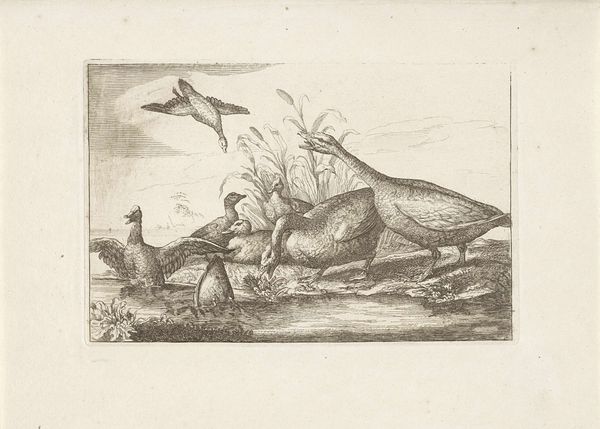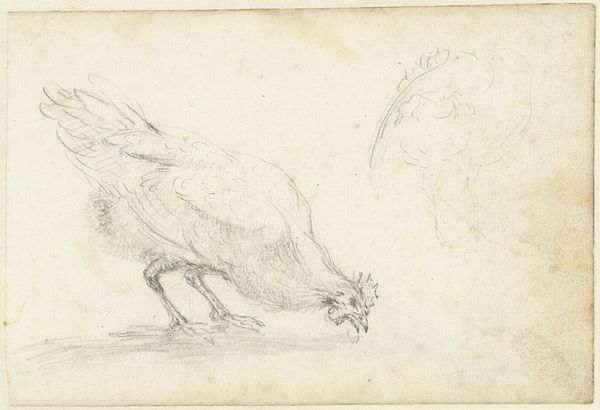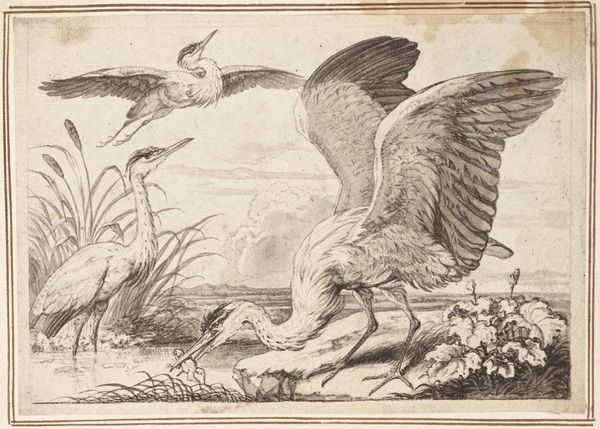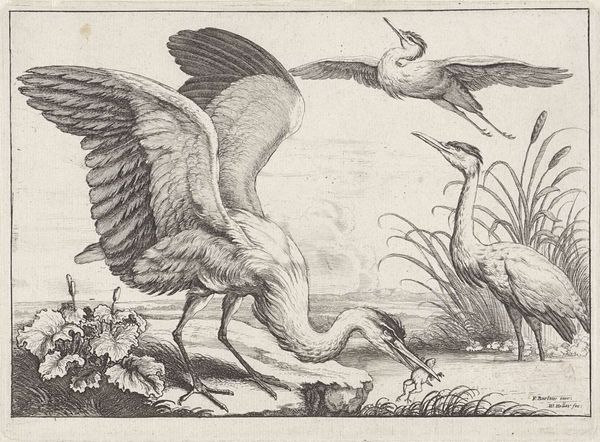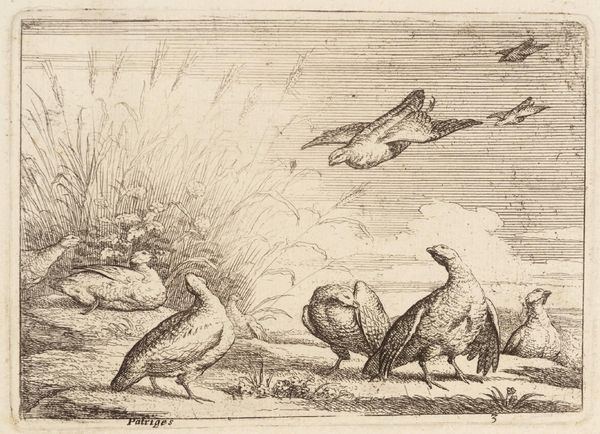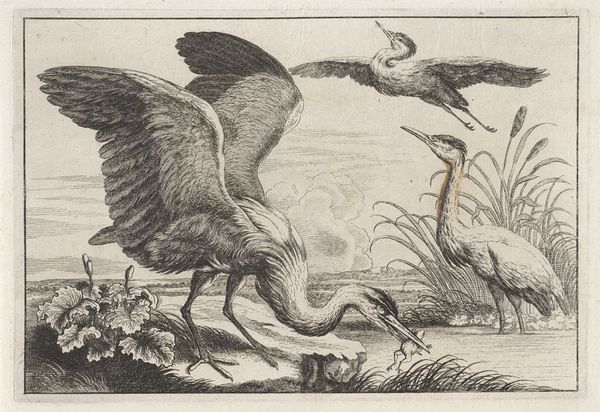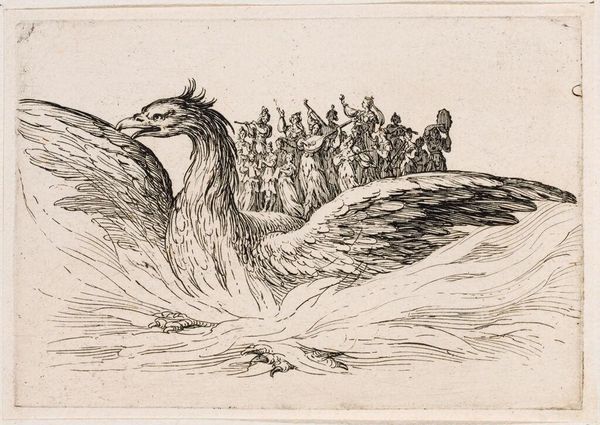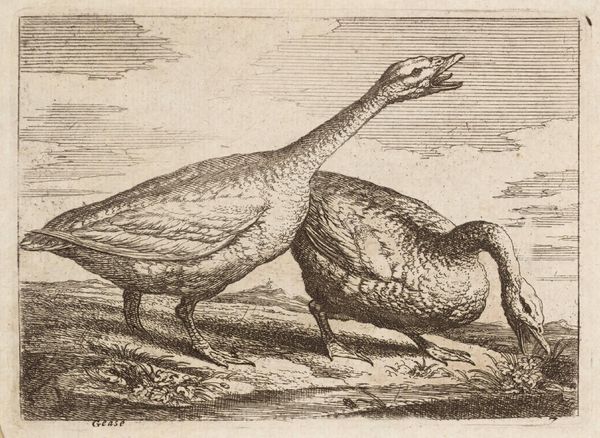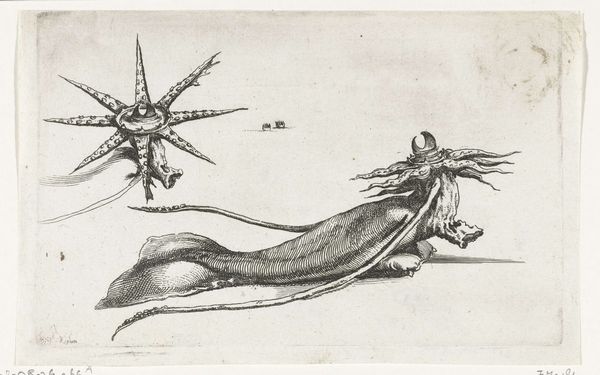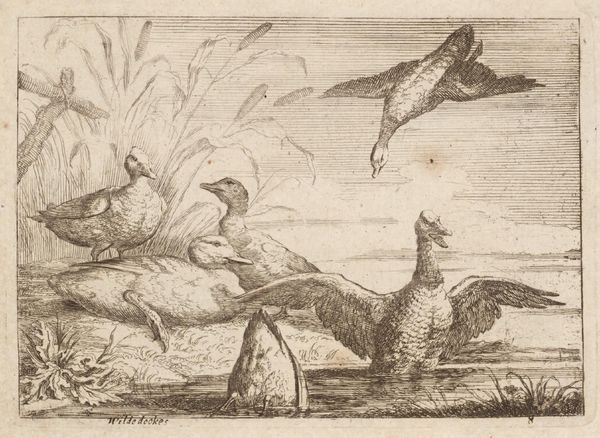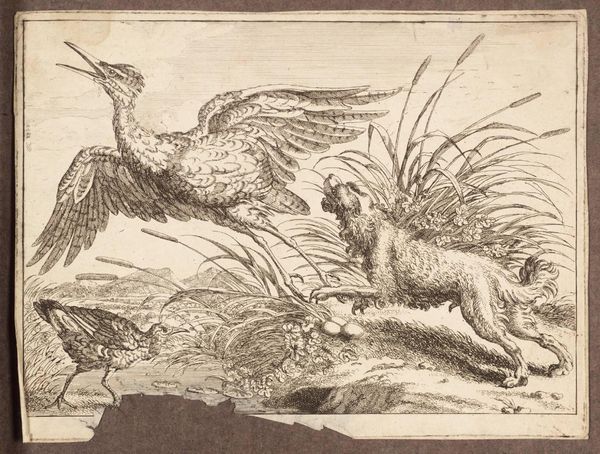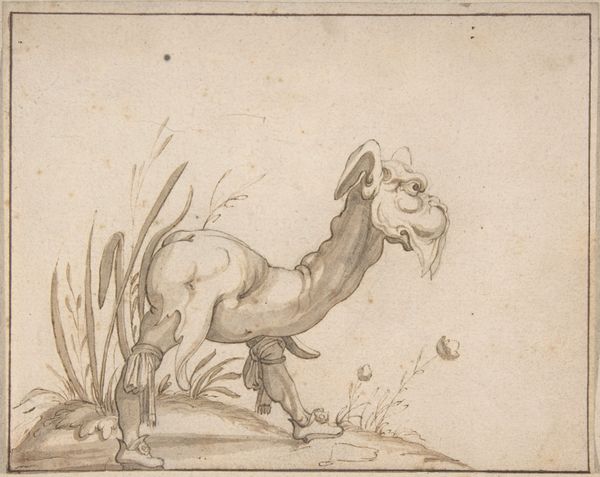
print, etching
#
baroque
#
animal
# print
#
etching
#
landscape
#
figuration
#
genre-painting
#
realism
Dimensions: height 161 mm, width 212 mm
Copyright: Rijks Museum: Open Domain
Curator: So, here we have "Peacocks," an etching by Frederick Bloemaert, dating from around 1679 to 1700. What strikes you about it? Editor: Well, it's a rather simple composition, but I'm drawn to the detailed work, especially the bird plumage. What can we learn from how it was made? Curator: Absolutely! Think about the etcher’s process. Bloemaert used acid to bite into the metal plate, meticulously controlling the lines that create texture and form. It’s not just about rendering peacocks realistically; it's about the labour, the specific choices made to represent their material presence, and how this labor connects with its economic value and market as a reproducible image. Editor: That’s interesting. So, this wasn't just artistic expression; it was a craft, a commodity? Curator: Precisely! Consider the accessibility of prints in 17th century Holland. Etchings like this one circulated widely, democratizing images. Bloemaert wasn't just depicting peacocks; he was participating in a visual economy. The tools he used, the ink, the paper - they all carry meaning tied to the cultural values of the time. What’s the societal status of peacocks at the time? Do you think this affects the appreciation of such artwork? Editor: Hmm, the details are fascinating. They show off the etcher’s skill. Now I'm curious about who bought these prints. Was it for scientific study, or were they merely decorative for wealthy people? Curator: Both are certainly possibilities. This kind of print served multiple functions, and its meaning depended on the context of its reception and consumption. What I learned is that by examining its materiality, we expose complex relationships of labor, consumption, and artistic value. Editor: This really adds layers of meaning that I wouldn't have seen at first glance. Thanks!
Comments
No comments
Be the first to comment and join the conversation on the ultimate creative platform.
